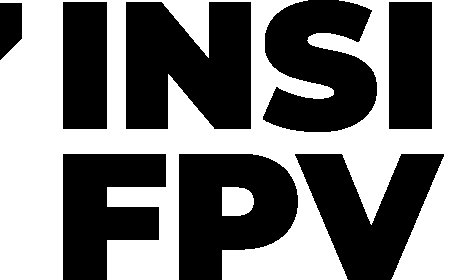Embroidery Digitizing in the AI Era: Unlocking Hyper-Personalized Textile Art
Discover how embroidery digitizing in the AI era empowers brands to deliver hyper-personalized textile art with unmatched speed and creativity.
Introduction
The art of embroidery has undergone an extraordinary evolution in recent years, largely fueled by the digitization of design and production. In 2025, the integration of artificial intelligence (AI) into embroidery digitizing is pushing boundaries further, enabling hyper-personalized textile creations. From customized corporate logos to intricate fashion embroidery, digitizing is no longer just a technical processit's a creative revolution. This article explores how embroidery digitizing is evolving through AI, its impact across industries, and how businesses can harness its power for branding, design innovation, and market differentiation.
What Is Embroidery Digitizing?
Embroidery digitizing is the process of converting a visual artwork, logo, or graphic into a digital embroidery file readable by embroidery machines. This transformation allows the precise rendering of designs using thread on fabric. Traditionally, digitizing was labor-intensive and dependent on skilled technicians. Today, AI-driven embroidery digitizing is redefining the process with speed, precision, and creative flexibility.
The Evolution: From Manual to AI-Driven Digitizing
Manual Embroidery Digitizing
-
Required deep technical knowledge of stitch types, densities, and fabric behavior.
-
Time-consuming, often taking hours to complete a single design.
-
Prone to inconsistencies when replicated at scale.
AI-Powered Embroidery Digitizing
-
Uses trained algorithms to analyze artwork and generate optimal stitch paths.
-
Adjusts settings based on fabric type, thread thickness, and stitch style.
-
Enables design previews with simulation tools.
-
Supports batch digitization for scaling up production.
Benefits of AI-Enhanced Embroidery Digitizing
1. Speed and Efficiency
Digitizing software powered by AI reduces design preparation time from hours to minutes. Brands can launch embroidery products faster and stay ahead in trend-driven markets.
2. Personalization at Scale
AI digitizing allows for quick customization of designs, enabling businesses to deliver individualized products without increasing cost.
3. Quality and Consistency
AI tools ensure consistent stitch patterns, spacing, and alignmenteven across hundreds of units.
4. Cost Savings
Automated digitizing reduces manual errors, fabric wastage, and time spent on revisions.
5. Accessibility
Even beginners can create professional-grade designs using intuitive, AI-enhanced embroidery platforms.
Key Industries Benefiting from AI Embroidery Digitizing
-
Fashion & Apparel: Rapid customization for ready-to-wear, haute couture, and limited editions.
-
Corporate Branding: Uniform embroidery, promotional merchandise, and event giveaways.
-
E-commerce & Print-on-Demand: Personalized embroidery for online shoppers.
-
Sports & Teams: Fast turnaround for jerseys, caps, and accessories.
-
Home Decor & Lifestyle: Monograms, cushions, towels, and wall art.
Advanced Tools Transforming the Landscape
Some cutting-edge platforms revolutionizing embroidery digitizing include:
1. Wilcom Embroidery Studio with AI Tools
Advanced editing, real-time simulation, auto-density adjustment.
2. Hatch Embroidery 3
Ideal for both professionals and hobbyists; includes smart design assistants.
3. Embrilliance with AI Plugin
Offers on-the-fly adjustments based on fabric and hoop size.
4. PulseID Automation
Supports large-scale, automated personalization for e-commerce platforms.
How the AI Process Works in Embroidery Digitizing
-
Artwork Upload: Vector or raster images are uploaded.
-
AI Analysis: The software detects outlines, colors, layers.
-
Stitch Path Creation: Stitch types and paths are auto-assigned.
-
Preview & Edit: A digital preview is rendered for approval.
-
Machine File Export: Formats like .DST, .PES, .EXP are generated.
Customization Use Cases in 2025
Personal Gifting
Monogrammed towels, custom baby clothes, wedding embroidery.
Fashion & Retail
Runway pieces with dynamic stitch textures; embroidery synced to music or motion via IoT.
Merchandise & Branding
AI enables batch personalizationeach client gets a unique version of the same base design.
Influencer & Creator Products
Creators can launch embroidered products with fans names, quotes, or personalized motifs.
AI and Sustainable Embroidery
AI digitizing isn't just about speedits about responsibility. Here's how:
-
Minimized Material Waste: Accurate designs mean fewer errors and less wasted fabric.
-
Optimized Stitch Counts: Efficient designs reduce thread usage.
-
Eco-friendly Threads & Fabrics: AI tools are starting to recommend compatible eco materials.
Challenges in AI Embroidery Digitizing
1. Learning Curve
While easier than manual digitizing, AI software still requires some training.
2. Artistic Limitations
AI cant fully replace the creative intuition of experienced human digitizersyet.
3. Software Compatibility
Some embroidery machines may require specific formats or firmware updates.
The Future: Whats Next in Embroidery Digitizing?
-
Voice-Command Design Input
-
3D Embroidery Preview Using Augmented Reality (AR)
-
Smart Stitch AI that adjusts stitch paths mid-run
-
Blockchain-Verified Design Authorship for digital rights management
Tips for Embroidery Businesses in 2025
-
Invest in AI-based tools and keep software updated.
-
Offer customers real-time design previews.
-
Focus on personalization servicesdemand is skyrocketing.
-
Partner with eco-conscious material suppliers.
-
Train your team on AI workflows.
Conclusion
Embroidery digitizing, once a niche technical process, has blossomed into a cornerstone of modern textile innovation. With the rise of AI in embroidery digitizing, businesses and creators now enjoy unprecedented speed, quality, and creative freedom. Whether you're a startup, a legacy brand, or a passionate hobbyist, embracing AI-driven digitizing services in 2025 is not just a smart moveits essential for staying competitive in an era of fast fashion, on-demand products, and personalized design.
By integrating smart tools, streamlining workflows, and focusing on customization, embroidery businesses can thrive in the AI era and shape the future of textile art.
FAQs
Q1: Can AI-based embroidery digitizing tools work with all embroidery machines?
Most modern tools export files compatible with popular formats like .DST, .PES, and .EXP. Always check your machine's format requirements.
Q2: Is AI embroidery digitizing suitable for small businesses?
Absolutely. Many platforms offer affordable subscriptions and user-friendly interfaces for small and medium-sized businesses.
Q3: How do I choose the best AI embroidery software?
Look for software that supports your machine format, provides real-time previews, and has good customer support.
Q4: Are there free embroidery digitizing software options?
Some software offers basic features for free. However, advanced AI tools usually require paid subscriptions.
Q5: What types of images work best for embroidery digitizing?
High-resolution vector images (like .SVG or .AI files) offer the best results during digitizing.
Q6: Can AI embroidery digitizing help with large orders?
Yes. AI tools streamline batch processing, enabling faster turnaround times with consistent quality.
Q7: Is training required to use AI embroidery tools?
Minimal training is required, especially with platforms that offer guided tutorials and support.
Q8: How does AI ensure consistent quality in embroidery?
AI algorithms maintain precise stitch counts, paths, and densities, reducing human error and ensuring quality output.




































![Play99 Login & Registration Guide for Indian Users [2025 Update]](https://www.atlantanewsplus.com/uploads/images/202507/image_140x98_6870c1df7bfcd.jpg)